Cleeve Abbey, located in Somerset in southern England, is the ruin of a great Cistercian abbey. The abbey dates from the late 1100s but was destroyed by Henry VIII in the dissolution of the monastaries in the early 1500s. The abbey remains a peaceful place today with the ruins in a good condition as well as finer details that have remained: floor tiles, wall paintings, and timber sculptures. Visitors to the abbey can enjoy lovely walks from the abbey or a train ride from the West Somerset Railway, which is a ten-minute walk away at Washford Station. The main attraction of the abbey are the details that have been left behind.
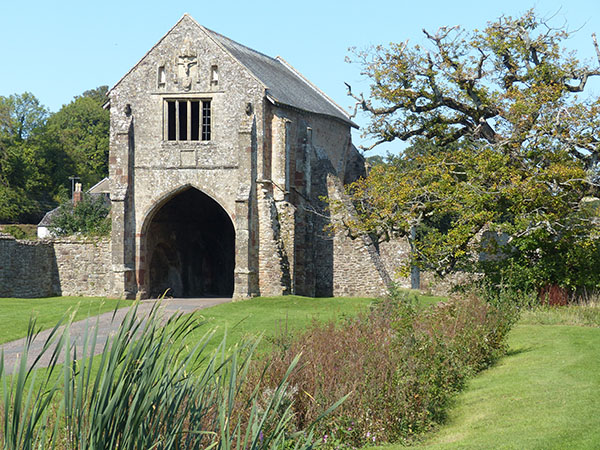
Visitors today enter the site through the gatehouse, just like they did hundreds of years ago. The message inscribed on the gatehouse reads (in Latin) "Gate be open; shut to no honest person". The river Washford runs next to the gatehouse. The gatehouse dates from the early 13th century and would have included a small room for the poor to get food and drink that was handed out here.

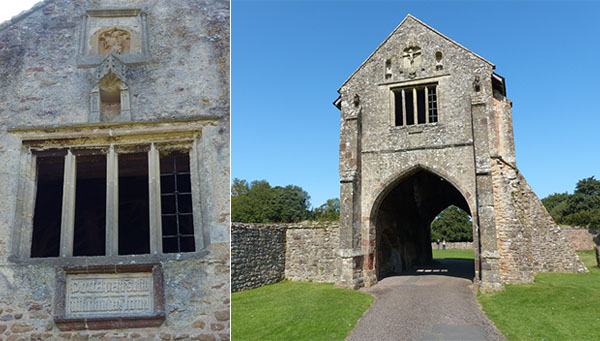

Some of the buildings at the abbey today are farm buildings that were built in the 17th and 18th centuries. The ticket building and shop is one of the farm buildings. There is a small museum here with information about Cleeve Abbey through the ages. Part of the museum shows how the floor tiles could be created.
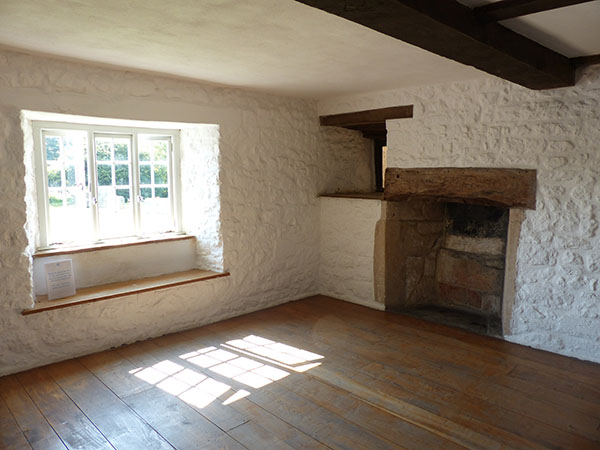
The abbey was founded in the late 1100s by Willian de Roumare and requested that his family was prayed for. The belief in those times was that if prayed for, the soul would spend less time in purgatory. An abbey was also a status symbol for the family as those who had them were considered to be wealthy. The abbey was completed quickly, by the early 13th century.

The monks that lived here were from the Cistercian way of life and completed manual labour and did not eat meat. They only had one meal a day in the winter months. They were silent and did not speak but communicated through a method of sign language.
Cleeve Abbey was one of the first monastaries to be closed by Henry VII because it had a small income.

Some wall paintings can be seen on the walls, including "the painted chamber" by the refectory. The refectory hall has carved wooden sculptures and wooden beams. The floor tiles were in various natural designs featuring animals and geometric shapes, but there are family heralds as well, and this shows off the wealth of the families with interest in the abbey.


The refectory was where the monks would have their communal meals and entertain guests. On the back wall of this great hall was a wall painting of the crucifix, but this became barely visible by 1950. The carved wooden statues in the rafters are original, and one of them depicts the green man. A door here leads to some private rooms where there is grafitti on the wall by a monk named "Thomas" and the "painted chamber", which can be seen behind glass.


The "painted chamber" is in a room thought to be the office of the abbot. The painting depicts a scene from a popular medieval book called "Gesta Romanorum". The hallway leading to the room has grafitti.
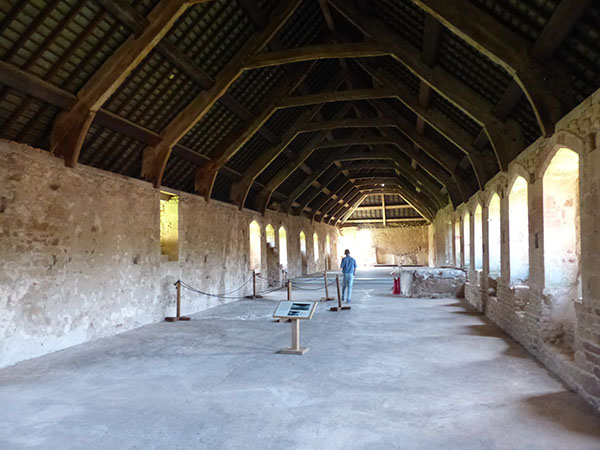
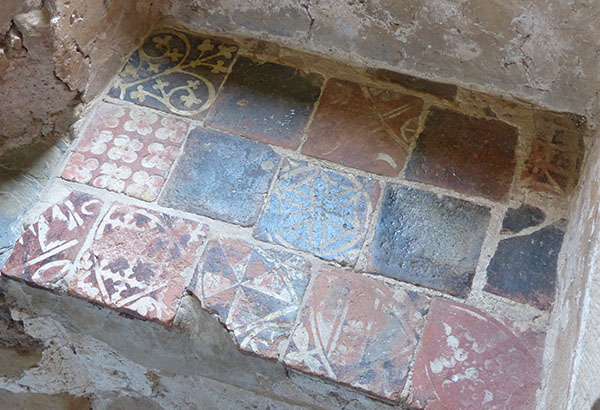
The dormitory is in a good state where visitors can envision the monks living in the open-floor area with beds on both sides. The "night stairs" is located in one corner where the monks could have gone to the floors below to pray. On the other side of the room were the latrines, and this would have been a swinging door where the monks could go in one door and out the other. The ledge where a lantern was placed for light can still be seen.
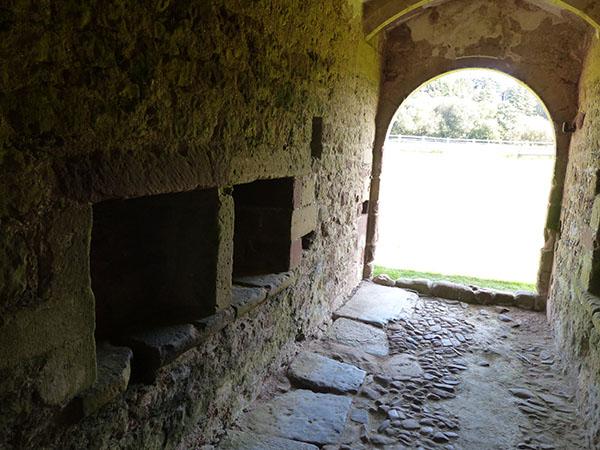
This hallway was a passageway between the cloisters and infirmary. It is known as a slype.

These rooms above were the private lodges and rooms of the abbot, which was more comfortable with more space and a fireplace. Above these rooms are others and the hallway to the refectory.
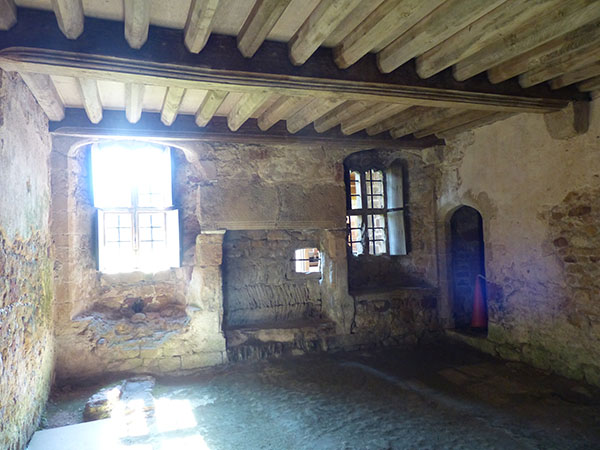

The wooden floors to the room in the hallway is exposed, and the window ledge is covered with the floor tiles. These would have been offices or private accommodation.

The chapter house is where the monks met to discuss official business. The walls were painted white, yellow, and red here. Some of the meetings held here were about punishments for monks who did not obey.


This part of the abbey was the inner court and is where some of the monks were buried. There is also the remains of a market cross here as markets were held at the abbey for additional income in the middle ages. Stables and a hostel was located here as well for pilgrims who came to see a "miracle" Virgin Mary statue. There would have also been a bakehouse and brewery here, so it would have been a busy area of the abbey.
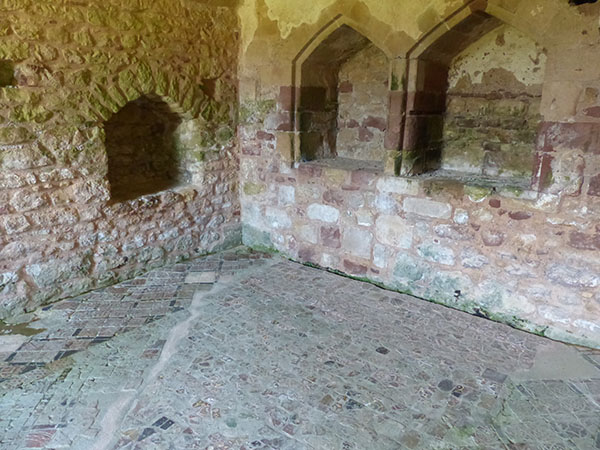
The sacristy was also included in this part of the abbey and has wonderful floor tiles. This is where the gifts and expensive items were stored.
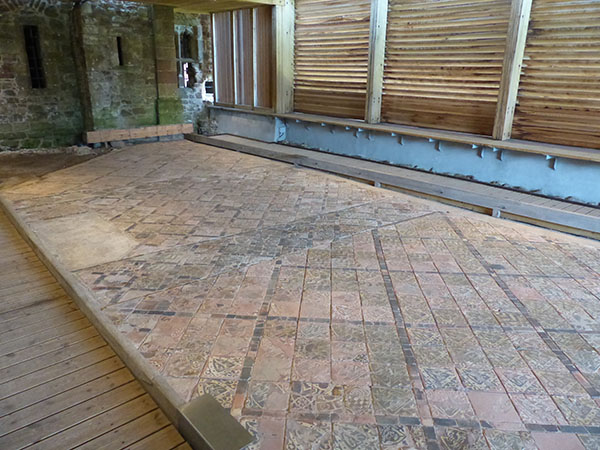

The old refectory is a modern constructed building with the floor tiles on display and covered for protection from the elements.
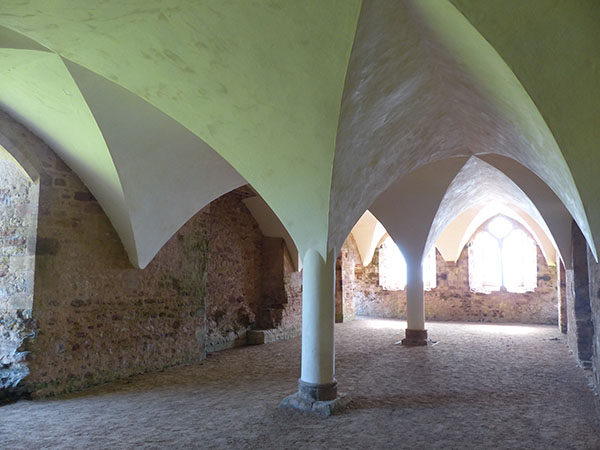
The is the day room where the monks would have spent some of their time on their tasks.

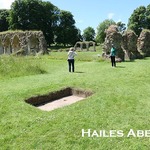
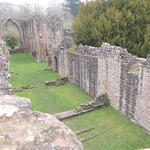
Leave a comment